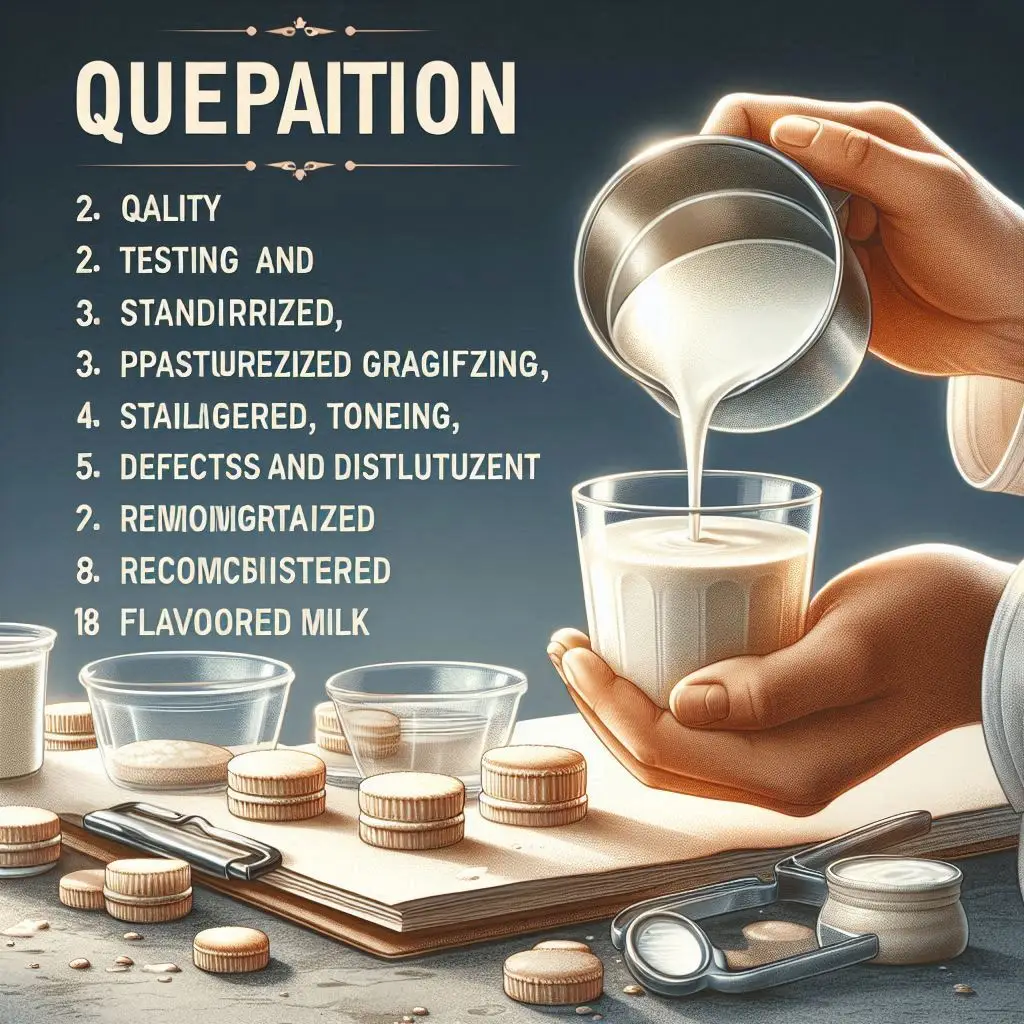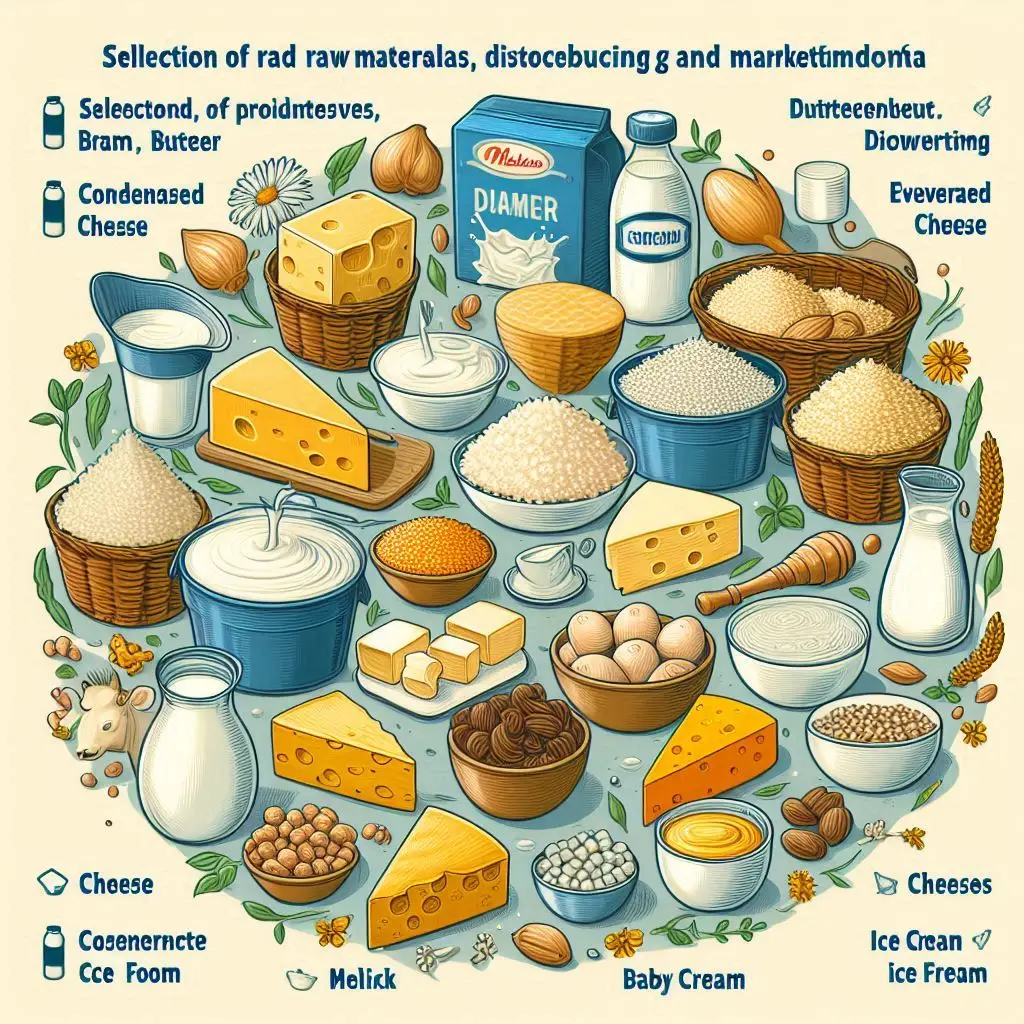Raw Milk Quality: Ensuring Safety and Excellence

Introduction
Ensuring the quality and safety of raw milk is crucial for producing high-quality dairy products that meet consumer expectations and regulatory standards. Raw milk testing and grading play a vital role in identifying potential hazards, monitoring herd health, and maintaining the integrity of the dairy supply chain. In this comprehensive guide, we will explore the various aspects of raw milk quality, testing, and grading. This guide provides insights into the importance of these practices for the dairy industry and consumers alike.
Types of Raw Milk Tests
Raw milk testing can be broadly categorized into on-farm tests and laboratory tests. Each type of test serves a specific purpose in assessing the quality and safety of raw milk.
On-Farm Tests
Farmers can conduct on-farm tests directly at their dairy operations. These tests provide immediate feedback to help them make informed decisions. Common on-farm tests include:
- Alcohol Test: This test detects any added water in the milk.
- Visual Inspections: Farmers check for signs of contamination.
- pH Testing: This test assesses the acidity levels of the milk.
Laboratory Tests
Laboratory tests involve sending milk samples to specialized facilities for in-depth analysis. Common laboratory tests for raw milk include:
- Standard Plate Count (SPC): This test measures overall bacterial levels.
- Somatic Cell Count (SCC): This test assesses udder health.
- Coliform Count: This test detects fecal contamination.
- Antibiotic Testing: This ensures the absence of harmful residues.
Grading of Raw Milk
Producers can grade raw milk based on various quality parameters, including bacterial counts, somatic cell counts, and organoleptic properties. One commonly used method is the Methylene Blue Dye Reduction Test (MBRT). This test assesses the microbiological quality of raw milk based on the time it takes for the blue dye to decolorize due to microbial activity.According to the BIS 1479 (Part 3): 1977 criterion, raw milk can be graded as follows based on MBRT:
| Time for Decolorization | Grade |
|---|---|
| 5 hrs and above | Very good |
| 3 to 4 hrs | Good |
| 1 to 2 hrs | Fair |
| Less than ½ hr | Poor |
Importance of Raw Milk Testing
Raw milk testing plays a crucial role in ensuring the safety, quality, and sustainability of dairy production. Key benefits of raw milk testing include:
- Mitigation of Health Risks: Identifying and eliminating potential pathogens helps protect consumers.
- Assurance of Quality: Maintaining high standards for taste, texture, and shelf life is essential for consumer satisfaction.
- Detection of Antibiotic Residues: Ensuring milk is free from harmful contaminants safeguards public health.
- Monitoring Herd Health: Promptly addressing issues within the dairy herd improves overall milk quality.
- Compliance with Regulatory Standards: Meeting legal requirements helps maintain consumer confidence.
Factors Affecting Raw Milk Quality
Several factors influence the quality of raw milk, both on the farm and during transportation and storage. Understanding these factors is essential for implementing effective strategies to maintain high-quality raw milk.
Herd Health
Unhealthy dairy cows often produce milk that is lower in quality. Mastitis, an inflammation of the udder, is one of the most common herd health concerns. This condition usually results from bacterial infection, which can increase somatic cell levels in the milk. While the limit for Grade “A” milk is 750,000 cells per milliliter (ml), somatic cell counts (SCC) exceeding 2-300,000 generally indicate mastitis in the herd. High SCCs can lead to quality defects in raw milk and processed dairy products.
Bacterial Contamination
Healthy cows secrete milk with relatively low bacteria counts. However, these counts can increase due to contamination and growth. Common causes of high bacteria counts include:
- Poor Pre-Milking Hygiene: Inadequate cleaning before milking can introduce bacteria.
- Inadequate Cleaning and Sanitization of Milk Equipment: Equipment must be thoroughly cleaned to prevent contamination.
- Poor Cooling: Proper cooling prevents bacterial growth.
- Mastitis: This condition can significantly raise bacteria levels in milk.
While the legal limit for total bacteria in farm Grade “A” raw milk is 100,000/ml, counts of 10,000 or less are desirable and achievable by most farms.
Antibiotics and Drug Residues
Farmers often use antibiotics and other drugs to treat cows with infections. After treatment, they generally withhold the cow’s milk from the bulk tank until it is free of drug residues. Dairy plants screen all raw milk tank trucks for the presence of beta-lactam drugs (i.e., the penicillin family) before unloading. This process minimizes the risk of contaminants in processed dairy products. Other antibiotics are tested randomly or routinely in some plants. Antibiotics in milk pose risks, such as allergic reactions and the development of antibiotic-resistant pathogens.
Sediment
Sediment in milk usually results from poor pre-milking hygiene procedures. Maintaining cleanliness in cows helps reduce soil and debris. Farmers can measure sediment in milk by filtering it and visually examining the residue. High sediment levels often indicate filth and the potential for bacterial contaminants that can influence quality.
Added Water and Freezing Point of Milk
Some milk may contain added water, either unintentionally (e.g., poor system drainage) or intentionally. Farmers can detect added water by measuring the milk’s freezing point (FP). The FP of milk is slightly lower than that of pure water and remains relatively constant. Raw milk generally has an FP below minus 0.542 degrees Hortvett (°H). New York State uses a cut-off of minus 0.530°H or higher (less negative) as a cause for investigation. Added water dilutes the protein and other milk components, reducing the milk’s overall value.
Farm-Related Off-Flavors
Farm practices can lead to off-flavors and odors in raw milk. Most flavor defects carry over into the finished product, although some volatile defects can be partially removed. Farmers can classify defects in milk as follows:
- Absorbed: Odors breathed in by cows or absorbed directly by the milk during storage.
- Bacterial: Spoilage microorganisms that affect flavor.
- Chemical: Related to enzymes, spontaneous chemical reactions, cow health, and direct chemical contamination.
Conclusion
Thus this article named Raw Milk Quality: Ensuring Safety and Excellence focuses on Raw milk testing and grading are essential components of a comprehensive quality assurance program in the dairy industry. By adhering to rigorous testing protocols and implementing effective strategies, dairy producers can build trust among consumers and ensure the safety and quality of dairy products. These practices also contribute to the long-term sustainability of the dairy sector.
As the demand for high-quality dairy products continues to grow, dairy producers must stay informed about the latest developments in raw milk testing and grading. By partnering with regulatory agencies, industry organizations, and research institutions, producers can access the resources and support needed to maintain a safe and reliable supply of raw milk.
For more pearls of Vets Wisdom:
https://wiseias.com/partitioning-of-food-energy-within-animals/






Responses